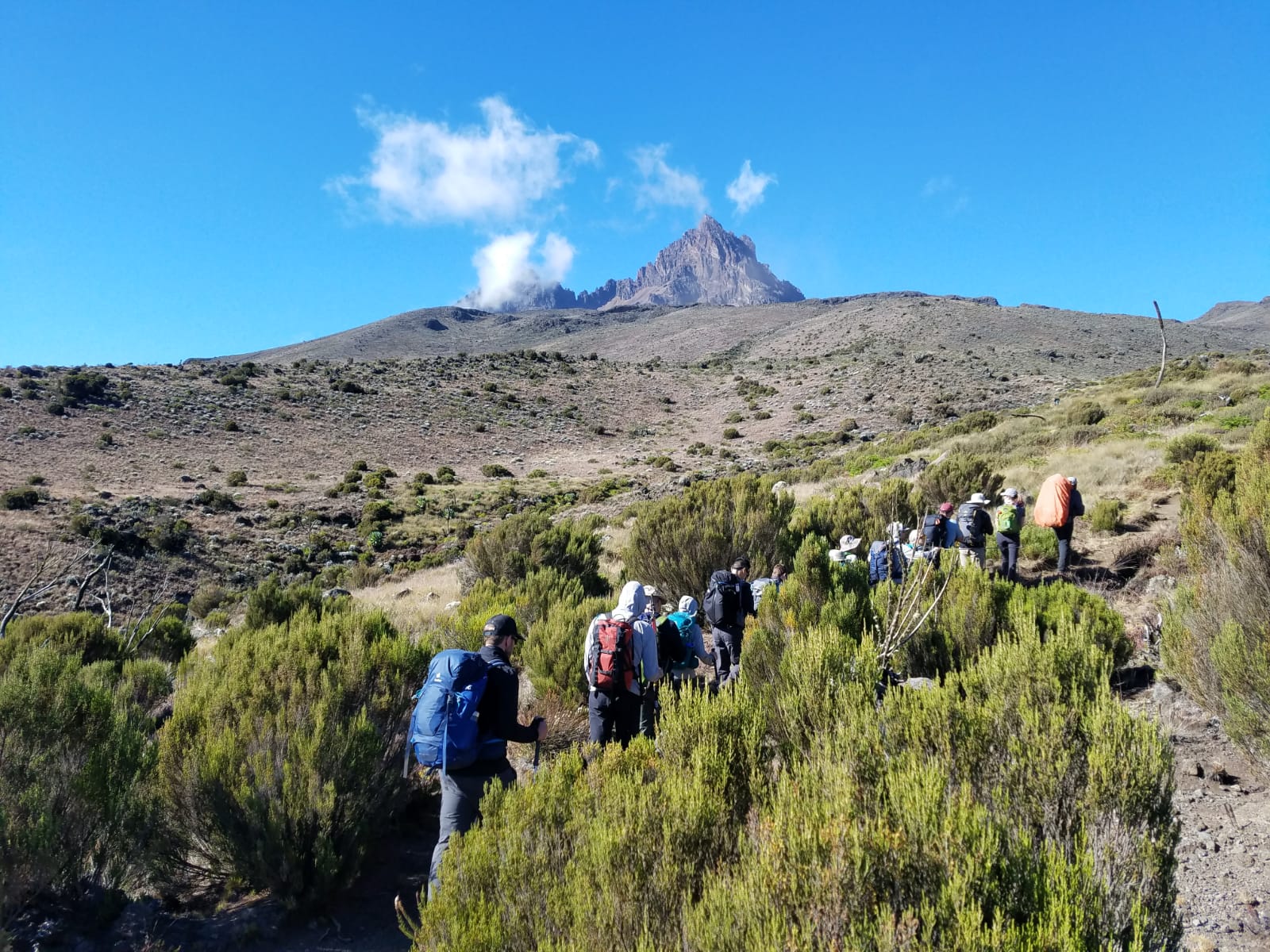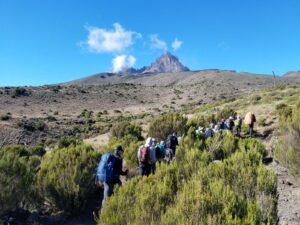Five Basic Training Tips for the Mountain Athlete

 While training for general fitness can be accomplished in a variety of ways, training for the mountains—and even a specific mountain—requires a thoughtful, intentional approach to boost your odds of a summit and safe return. At Alpenglow Expeditions, we rely on clear, honest communication about goals and abilities before sending climbers into the field. Often, a significant portion of these conversations revolve around how to train and prepare for big mountains.
While training for general fitness can be accomplished in a variety of ways, training for the mountains—and even a specific mountain—requires a thoughtful, intentional approach to boost your odds of a summit and safe return. At Alpenglow Expeditions, we rely on clear, honest communication about goals and abilities before sending climbers into the field. Often, a significant portion of these conversations revolve around how to train and prepare for big mountains.
From Lynette Talbott, Alpenglow’s recommended personal trainer and owner of Billy Goat Swift, come five basic training tips for the mountain athlete:
Consistency
Developing a consistent routine is arguably the most important aspect of training for the mountains, with a weekly balance of strength, cardio, and mobility. Not only will consistency develop your physical strength, but it will also bolster your mental fortitude. The ability to keep pushing and take another step when the going gets tough is essential. Whether that’s heading to the gym after a long day at work, or continuing to push uphill through cold wind and snow in order to make it to your next high camp, the accomplished mountain athlete knows how to put mind over matter and put in the effort where it counts.
Strength Workouts
Single leg, unilateral exercises (training both legs, separately), such as single leg press, lunges, and step-ups, will prepare you for lengthy uphill treks, acclimatization laps, and stashing gear in mountain camps. When you’re trekking, odds are you’re carrying a large pack as well. As such, training the arms, chest, back, and core will prepare your body for miles of traveling while carrying a heavy load.
While training cardio and endurance is mandatory for long days on foot, strength training ensures that your body, particularly your joints and muscle tissue, does not give out on you sooner than you’d like on the trail. Training the specific muscle groups that will see the most wear and tear is the best way to stay strong on days with lots of elevation gain over technical terrain.
Nutrition
Giving your body the proper nutrients is important to fuel any ascent, but developing consistent eating habits over time will condition your body to the foods that we often bring to the mountains. Most of these foods are unprocessed and heavy in carbs, protein, and/or fats. When we’re at altitude, our internal systems are forced to adjust to our exterior environments, and a common symptom of this adjustment process is loss of appetite. Being well-nourished will also boost our immune systems and strengthen our gut biomes for travel in foreign places.
Thus, it is helpful that we learn how to eat before we’re hungry and hydrate before we’re thirsty. When we’re in the mountains, timing and efficiency is everything. Proactivity and thinking ahead will safeguard the mountain athlete from having to slow down and make up for missed opportunities to refuel and recharge.
Long days wearing a backpack
Simulating the conditions for which we are training will provide physical and mental reassurance that we can do the thing we set out to do. A common pitfall in mountain training occurs when prospective climbers and trekkers believe short-hit, cardio-heavy workouts will adequately prepare them for the mountains. While these are helpful in terms of consistent weekday training, we must also work to simulate the conditions we expect to endure.
For example, if the expedition itinerary includes 6- to 8-hour days on the trail wearing a heavy pack, it is in our best interest to do this beforehand on our own time. Doing so will illuminate how our endurance holds up, whether or not we’re fueling properly, and what issues within our bodies do or don’t become a problem after x number of miles or hours spent on the go.
For those that already live in the mountains and/or have access to trail networks, this process should be relatively straightforward. For those that live in the city, however, mountain training will require that you get creative to simulate mountain conditions. Whether that’s walking laps around your local park in your hiking boots with a heavy pack, or spending an hour or two in the gym on the stair-stepper, whatever you’re able to put into training will determine what you get out of it. Ultimately, the mountains will expose all our strengths and weaknesses.
Program design that accommodates work/life balance
Adopting a program that accommodates your work life balance ties directly into each of the aforementioned tips, and may be the largest determinant of your success in the mountains. Setting an acceptable, attainable goal that nonetheless challenges your norms is the only way to achieve true behavioral change and develop healthy habits.
First, we must ask ourselves if our goal is acceptable to begin with, meaning: can I set aside the time and discipline myself to train for this adequately? Finding success in the mountain takes consistent training. At Alpenglow, we like to think about it this way: the more time you spend training before the expedition, the more fun you’ll have while you’re out there moving through the mountains.
When we set goals that are too lofty, our natural reaction is to beat ourselves up. Setting smaller goals that lead up to a larger fitness benchmark allows us the opportunity to show ourselves what we can accomplish and boost confidence.

We recognize that training can, at times, feel lonely. This is a common reason why people often defer to the 45-60 minute weekday workouts as opposed to the long days spent hiking with a heavy pack. A quick hit in the gym, mountain biking, or rock climbing with friends is, of course, going to be much more appealing than walking solo for six to eight hours, as it can be hard to find a companion to join you for these endeavors. Harking back to Tip #1, we must find ways to put mind over matter and understand that the long days spent on the trail all contribute to the bigger picture. Though it can be difficult to envision, the work you put in on the front end will feel worth it when you’re standing on the summit of your dreams.
Though training plans may differ depending on our objective, these tips permeate all aspects of training for the mountains. For more information about our expeditions, send us an email at info@alpenglowexpeditions.com or give us a call at 877 873 5376. For more information on mountain training or to inquire about a customized training plan, reach out to lynette@billygoatswift.com.